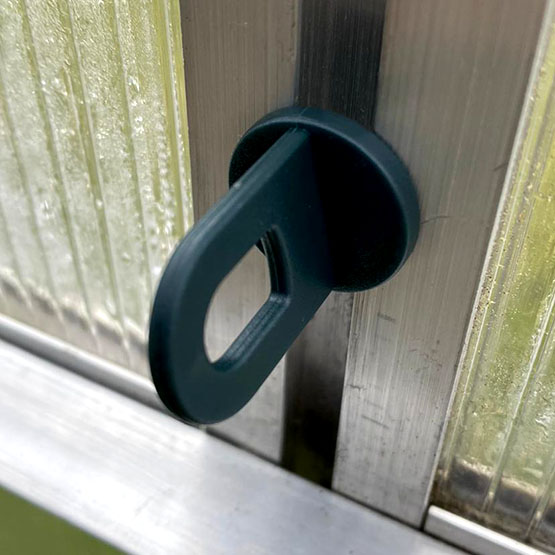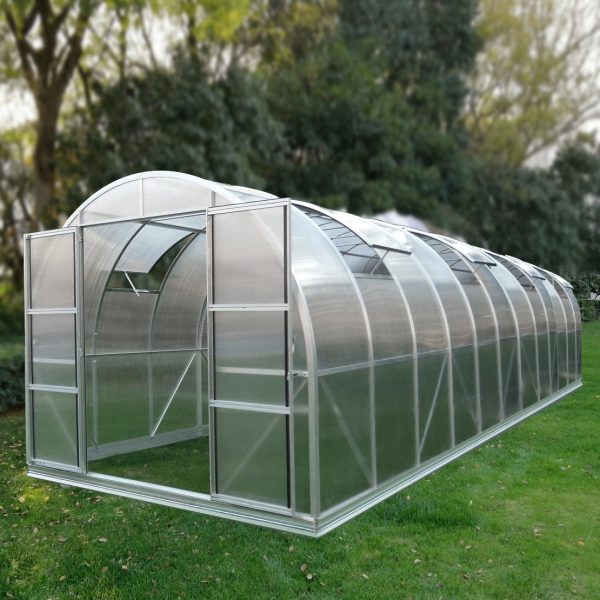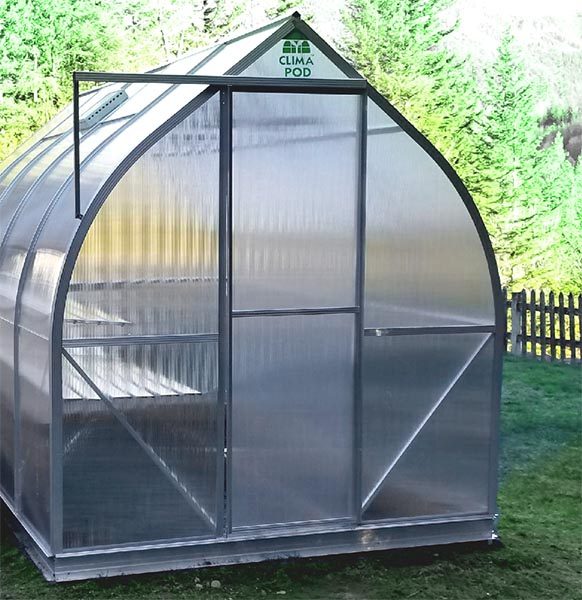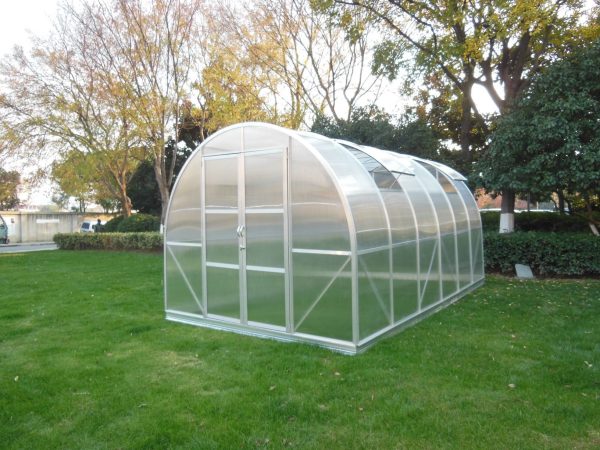A polycarbonate greenhouse is gaining more and more admirers among gardeners. An important role in the popularization of greenhouses was played by a simple and economical method of polycarbonate greenhouse installation. After all, when lighting occurs, you can assemble it yourself, without resorting to the services of hired workers.
But in order for the finished greenhouse to fulfill all the functions assigned to it, some simple but important rules must be observed during installation.
Polycarbonate greenhouse installation mistakes
The ClimaPod’s specialists have identified the TOP 5 common mistakes of polycarbonate greenhouse installation that can ruin your crop.
Wrong choice of the side of the polycarbonate sheet
The light transmittance of cellular polycarbonate is no less than that of glass. At the same time, the strength of the polymer is hundreds of times higher, which increases its attractiveness when collecting both at home and in industrial conditions. But if a glass sheet can be placed on any surface, then when installing a polycarbonate sheet, this moment must be divided with great attention.
To protect against enhanced UV radiation, a special coating is applied to the surface of the polycarbonate, which is indicated by a marking or film in a contrasting color. During the installation of the greenhouse, it is observed that the material is directed towards the detection sun.
Incorrect position of honeycombs when laying polycarbonate
Polycarbonate itself is highly hygroscopic. In order not to aggravate this characteristic, when building a greenhouse, install sheets with hollow channels (honeycombs) vertically. In case of occurrence, water, snow, dust and other external contaminants will accumulate in the honeycombs. This leads to a deterioration in appearance (the surface will turn yellow and mold at the joints) and increase the risk of leaf deformation (under significant freezing of condensate in the cold season, the material decreases to crack).
Untimely removal of the transport film
The plant covers polycarbonate with a film to protect it from mechanical damage, prevent chips, scratches and microcracks during transportation. You should remove this protective film before mounting the plastic on the frame.
As we have already determined, the color film looks on the face with UV protection. Taking into account the fact that its sheet must be marked on the surface in order to avoid confusion during the construction process.
If you choose a panel along with a large fuse, there is a high probability that the high temperature that it “sticks” to the coating is suitable. After that, its removal will be much more difficult.
Fixation with metal tape
Many inexperienced gardeners make a huge mistake by using galvanized tape to join polycarbonate. Over time, its tension weakens, due to which the entire structure is damaged. In addition, the metal strongly compresses the sheets and exposes the natural thermal expansion of the polymer.
The best preservation is thermal washers with a solid base. They compensate for the change in the linear dimensions of the material under the influence of temperature, preventing its breakage and distortion.
By the way, ClimaPod greenhouses use a different method of attaching polycarbonate sheets to the frame. The edges of the sheets must be inserted into the grooves in the aluminum frame. This gives them the necessary mobility during thermal expansion. There is a video on our YouTube channel on how to do it quickly and easily.
Lack of sealing
Neglecting to seal polycarbonate sheets can backfire in the form of high greenhouse density. Sediments that enter the hollow cells become a comfortable environment for the harmful infections and insects, causing clouding of the coatings.
To prevent this from happening, the upper part of the polycarbonate is covered with a continuous vapor-tight tape and a U-shaped end profile. The top ends do not need to be completely sealed, provided proper installation is observed.
The top side of the polycarbonate in ClimaPod greenhouses is protected by a groove in the aluminum ridge of the roof.
How to extend the life of the greenhouse
Maintain an aesthetic appearance and ensure the function of a polycarbonate greenhouse.
- determination of high-quality polycarbonate with a thickness of at least 4 mm;
- follow the rules for mounting the greenhouse, place sheets of “correct” rules for access to the sun;
- regularly ventilate the greenhouse, avoiding voltage stress, if necessary, install automatic vents;
- wash the greenhouse once a year, after harvesting, using non-abrasive products that do not scratch the surface. DO NOT WASH POLYCARBONATE FROM HIGH PRESSURE WASHERS;
- equip a blind area of crushed stone or gravel to avoid the formation of dirt around the greenhouse;
- clean off layers of snow and ice crust from the roof in time. Otherwise the frame may bend and the coating will deteriorate. Cleaning requires quality without scratching the polycarbonate.
By adhering to our advice, and avoiding the miscalculations listed above, you will get a reliable and durable polycarbonate greenhouse that will last for several decades.






